

What are Different Types of Lifeboats and How to Select the Right Type
Life boats, which are essential components of maritime safety equipment, are critical assets in ensuring the safety of people at sea during emergencies. Various types of lifeboats have been developed over the years to meet various maritime needs, providing diverse solutions for evacuating and safeguarding crew and passengers. In this article, we’ll explore the different types of lifeboats, their designs, their specific applications in maritime safety and key factors to select the most suitable lifeboat.
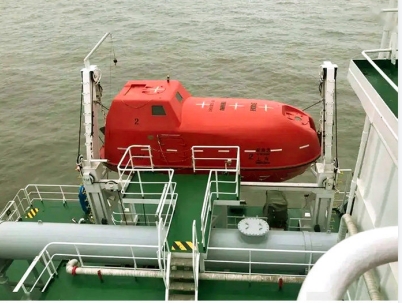
Common Types of Lifeboats
1. open lifeboats.
Open lifeboats are simple, traditional designs that have been in use for many years. These boats are typically constructed of wood or, more commonly nowadays, long-lasting materials such as fiberglass or reinforced plastic. They feature a basic, open design without a roof, making them suitable for quick and easy boarding. Open lifeboats are commonly found on smaller vessels and are manually propelled using oars or a small outboard motor.
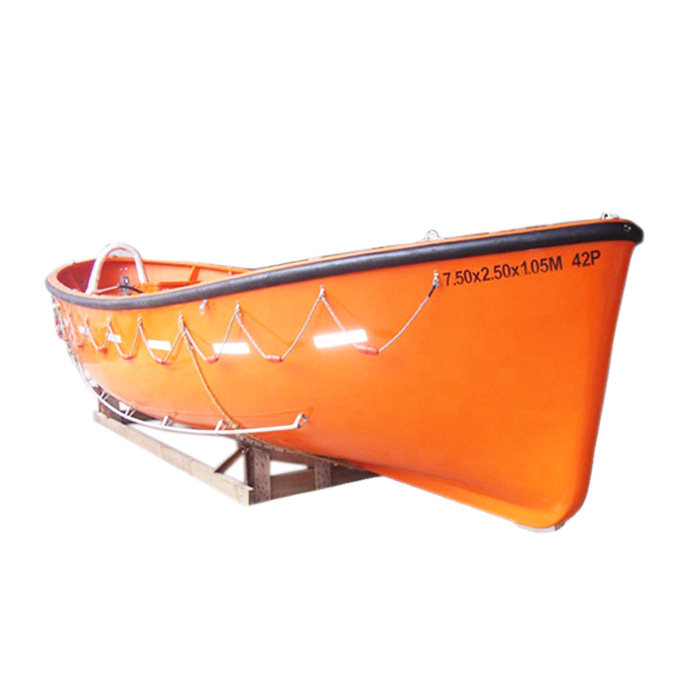
2. Enclosed Lifeboats
Enclosed lifeboats are built with a protective canopy or roof to protect the occupants from the elements. This design offers additional protection against inclement weather, such as rain, wind, and rough seas. Enclosed lifeboats are frequently outfitted with vital survival equipment, communication systems, and emergency supplies. These lifeboats are appropriate for a variety of vessels, such as cargo ships, passenger ships, and offshore platforms.
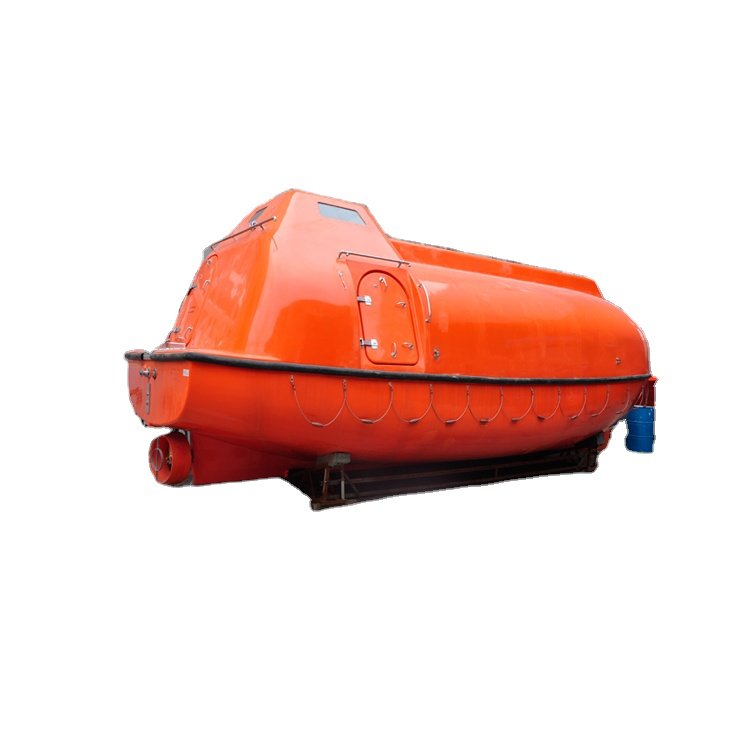
3. Freefall Lifeboats
In an emergency, freefall lifeboats are specifically designed for rapid deployment from a ship’s deck. Freefall lifeboats, unlike traditional lifeboats, are launched by releasing them from a cradle or ramp at an elevated position on the ship. The lifeboat’s freefall descent allows it to enter the water quickly and efficiently, ensuring a timely evacuation in critical situations.
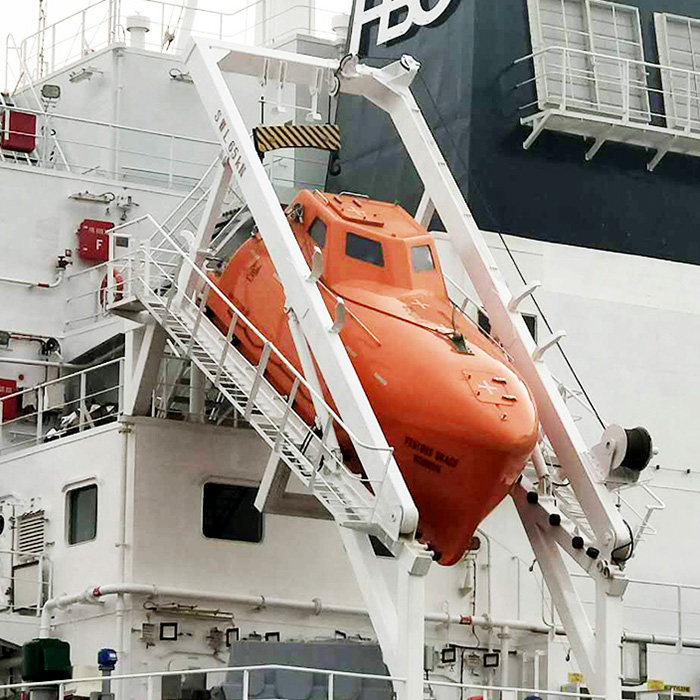
4. Fast Rescue Craft
Fast rescue craft (FRCs) are smaller, agile vessels used for rapid response and rescue operations. These boats are frequently found on larger vessels like passenger ferries, cruise ships, and offshore installations. Fast rescue craft are designed for quick maneuverability and can quickly reach locations to assist in emergencies or rescue missions.
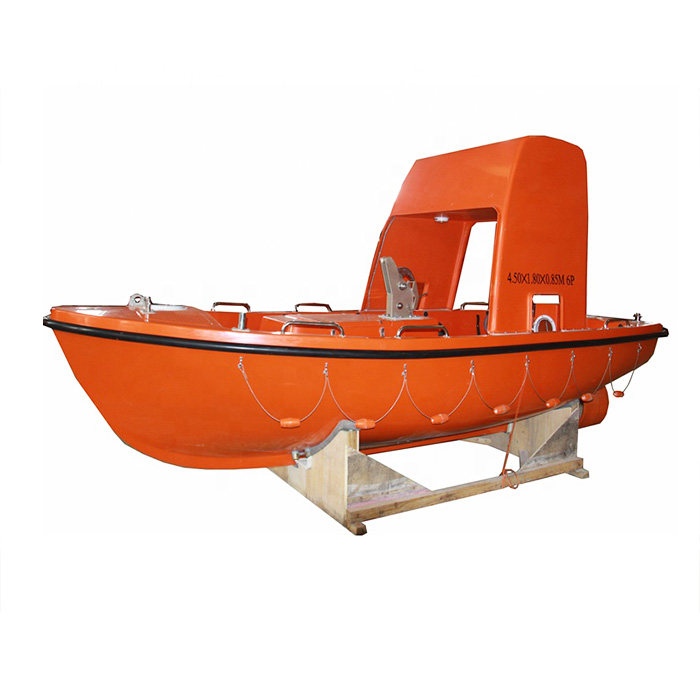
5. Davit-Launched Lifeboats
Davit-launched lifeboats are commonly used on ships and offshore platforms of various sizes. Davits, which are mechanical devices that lower the lifeboat from a ship’s deck to the water, are used to launch them. These lifeboats can be open or enclosed, making them a versatile solution for a variety of vessel types. Davit-launched lifeboats are well-known for their dependability and ease of use.
6. Inflatable Lifeboats
Inflatable lifeboats have inflatable tubes wrapped around the hull to provide buoyancy and stability. Because these lifeboats are lightweight, they are simple to store and deploy. Smaller vessels, such as yachts and offshore installations, frequently use inflatable lifeboats. They can be open or enclosed, providing design flexibility.
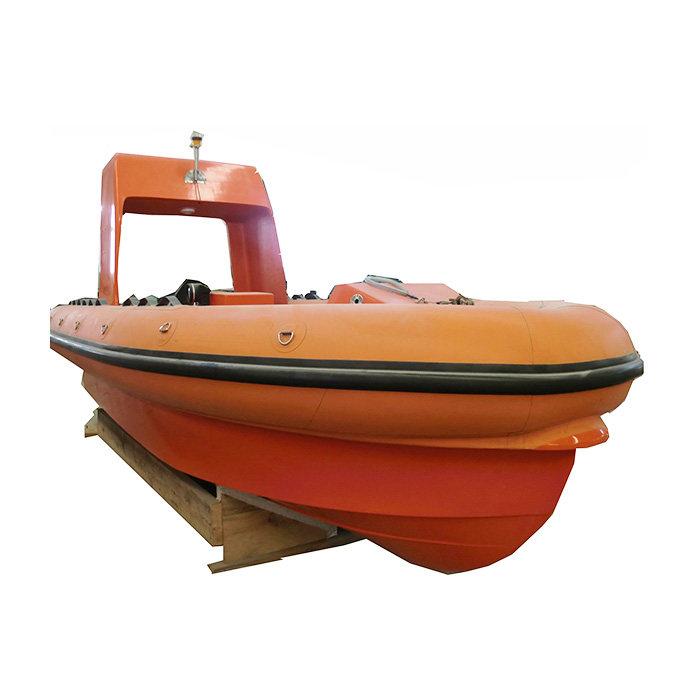
7. Combination Lifeboats
Combination lifeboats combine features from various types to provide a complete solution. A combination lifeboat, for example, may have an enclosed design with inflatable elements for added buoyancy. These lifeboats aim to combine the benefits of various designs in order to improve safety and versatility.
Key Considerations to Select the Most Appropriate Type of Lifeboats
Choosing the best type of lifeboat is a critical decision for ensuring the safety of people at sea.
- Vessel Type and Size
Consider the size and type of the vessel. Larger vessels may require lifeboats with greater capacity and additional features. Passenger ships, cargo vessels, and offshore platforms may have different requirements based on their specific operations.
- Occupancy Capacity
Evaluate the maximum number of people the lifeboat needs to accommodate. Lifeboats come in various sizes, and it’s crucial to choose one that can safely carry all individuals on board in emergency situations.
- Operational Environment
Assess the typical operating conditions and environmental factors where the vessel operates. Different lifeboats are designed to withstand specific sea conditions. For instance, vessels navigating in rough seas may require more robust lifeboats with enhanced stability features.
- Launch and Recovery Method
Consider the method of launching and recovering the lifeboat. Davit-launched lifeboats are common on many vessels, while freefall lifeboats are designed for rapid deployment. The choice depends on the vessel’s layout and the speed at which evacuation is required.
- Survivability Features
Evaluate the survivability features of the lifeboat, such as its stability, self-righting capabilities, and ability to withstand extreme weather conditions. The lifeboat should be capable of keeping occupants safe and secure in a variety of emergency situations.
- Accessibility and Ease of Boarding
Consider how easy it is to board the lifeboat, especially in difficult conditions. Some lifeboats are built with quick and easy boarding in mind, which is critical during emergency evacuations. Consider accessibility features such as ladders or platforms.
- Special Requirements
Based on the vessel’s operations, determine any special requirements or features that are required. Offshore drilling vessels, for example, may benefit from freefall lifeboats for rapid evacuation, whereas vessels transporting hazardous materials may require lifeboats with additional safety measures.
- Regulatory Compliance
Ensure that the selected lifeboat complies with international and national regulations and standards. Different regions may have specific requirements for lifeboat design, equipment, and maintenance. Compliance with regulations ensures that the lifeboat meets recognized safety standards.
- Training and Familiarization
Consider the training requirements for operating the selected lifeboat. Crew members should be adequately trained in the proper use of the lifeboat, including launching, navigation, and emergency procedures. Familiarity with the lifeboat’s features is crucial for efficient and safe operation during emergencies.
- Maintenance and Inspection
Assess the ease of maintenance and inspection for the chosen lifeboat. Regular maintenance is essential for ensuring that the lifeboat remains in optimal condition. Easy access for inspections and routine maintenance tasks contributes to the lifeboat’s reliability.
- Cost Considerations
While safety is the most important consideration, consider the overall cost of acquiring and maintaining the lifeboat. Determine the lifecycle costs of the lifeboat, including purchase, installation, training, and ongoing maintenance. Balance budgetary concerns with the need for a dependable and efficient lifeboat.
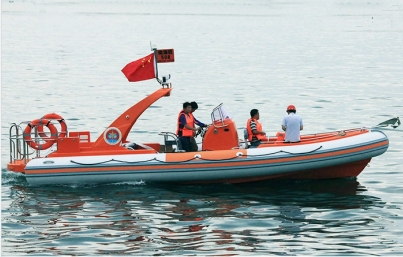
The diversity of lifeboat designs reflects the evolving needs and challenges of maritime safety . Each type of lifeboat serves a specific purpose, such as quick evacuation, sheltering occupants from the elements, or allowing for rapid rescue operations. Choosing the right type of lifeboat requires a thorough examination of the vessel’s characteristics, operational environment, and safety requirements. By carefully considering these factors, vessel operators can ensure that the selected lifeboat is well-suited to handle emergency situations, serving as a critical component in maritime safety and evacuation procedures.
Get Free Quote

- Privacy Overview
- Strictly Necessary Cookies
This website uses cookies so that we can provide you with the best user experience possible. Cookie information is stored in your browser and performs functions such as recognising you when you return to our website and helping our team to understand which sections of the website you find most interesting and useful.
Strictly Necessary Cookie should be enabled at all times so that we can save your preferences for cookie settings.
If you disable this cookie, we will not be able to save your preferences. This means that every time you visit this website you will need to enable or disable cookies again.
Do Yachts Have Lifeboats? [The Complete Answer]
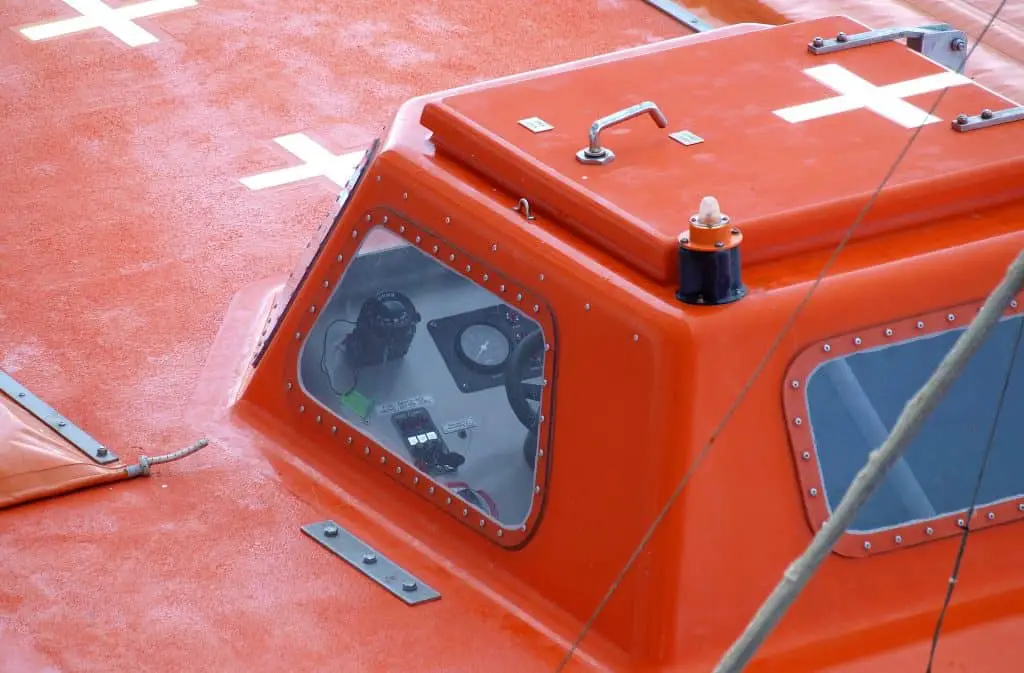
Whether you’re on a tiny little fishing boat or a supersized tri-deck yacht, safety should be the highest priority. That’s why all boats come with safety features that make sure accidents are mitigated, and in case one actually happens, no one gets hurt.
The yacht is often recognized as a premier recreational watercraft that’s for those with a slightly more sophisticated taste (and a bigger budget.) And because they’re pretty expensive, you might expect those things to come with serious safety features. So, do yachts have lifeboats? Here’s what you need to know.
What is the Purpose of a Lifeboat?
Now, this one should be pretty obvious, but for the sake of information, we’re sharing anyway. A lifeboat is exactly what its name suggests. Developed to provide passengers a safe escape from an otherwise damaged, sinking, or capsized vessel, a lifeboat is a protective measure that reduces the risk of maritime deaths .
But it’s more than just a ‘nice little safety feature’. Lifeboats are required by law for yachts and cruise ships to name a few. These regulations were put in place by the United Nations International Maritime Organization as well as the International Convention for Safety of Life at Sea ( SOLAS .)
According to the regulations, there should be enough lifeboats on board to accommodate the maximum number of passengers allowed on board at any single time. The law also stipulates that passengers must be informed of how to use these lifeboats in case the need arises while they’re underway.
Different Types of Lifeboats on Yachts
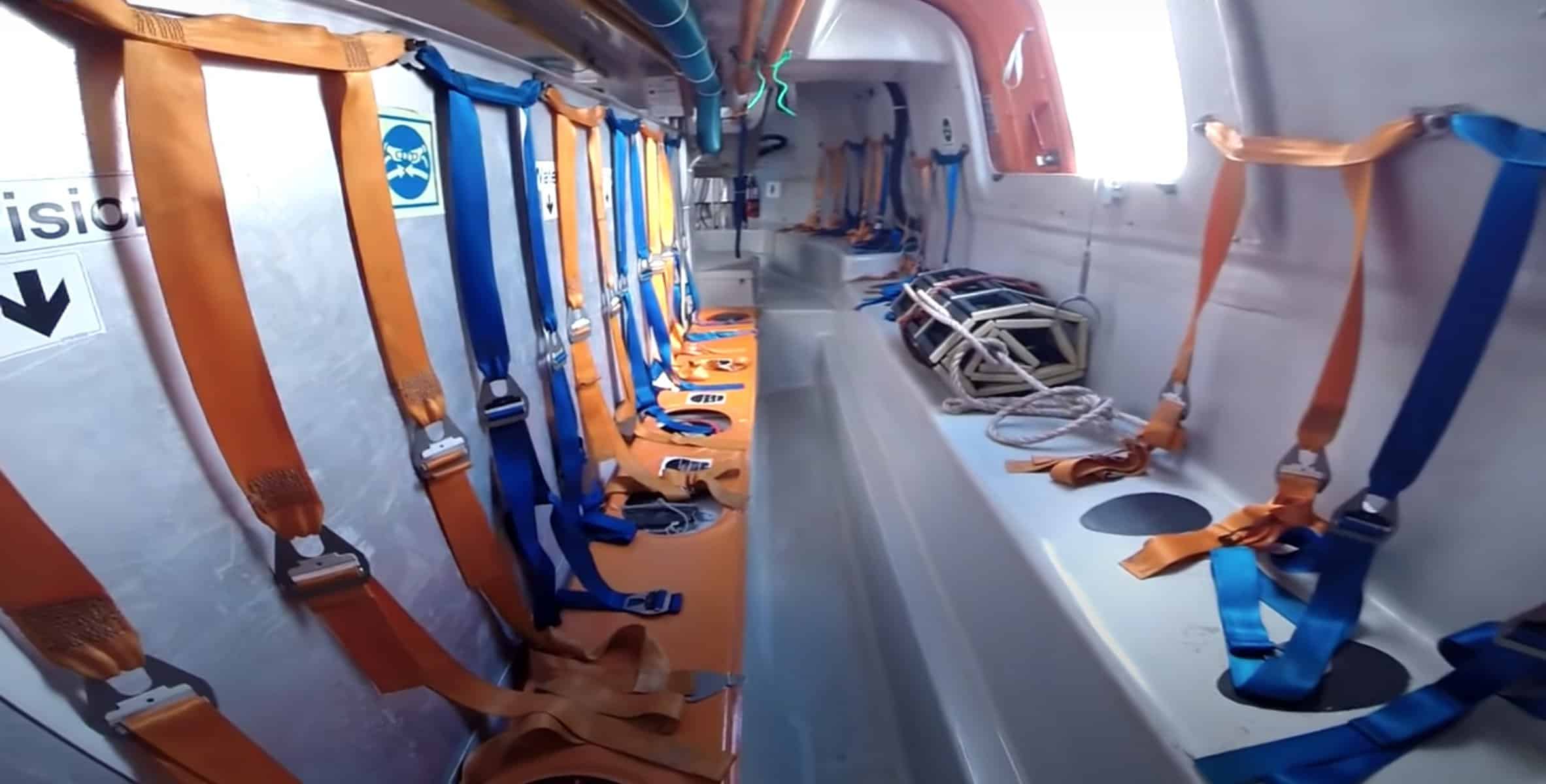
To answer the main question, yes, yachts have lifeboats . But smaller vessels that can’t accommodate lifeboats for storage capacity limitations must have at least enough life rafts on board.
Another thing about lifeboats is that there are lots of different designs available, and yachts might carry different models depending on a variety of factors, including passenger capacity, distance of travel, and size, to name a few.
Life boats can either be closed or open , which already tells you what to expect. A closed lifeboat is entirely sealed to provide evacuees extra protection. The open lifeboat looks more like a small boat and doesn’t have a roof. They’re operated manually or by a small ignition engine.
Today, the open lifeboat is generally not recommended because of their exposure to the elements and the potential for waves to overcome the vessel when there are strong winds. They’re still found on smaller vessels though.
The freefall lifeboat is a closed lifeboat that essentially looks like a submarine since it’s completely enclosed to protect its passengers from water, heat, rain, and the elements. The ultra buoyant design is deployed via a short freefall from the side of the yacht. They’re typically seen on larger vessels and are preferred for their ease of deployment.
The hyperbaric lifeboat is the most sophisticated lifeboat you’ll find, and they’re usually deployed from within the vessel itself. The lifeboat comes with a control system, an onboard generator, and even equipment for the crew. These are found on superyachts and cruise ships that carry several hundreds of passengers.
In some cases, it may be necessary for a yacht to have a fireproof lifeboat especially in situations where they might be at risk of catching fire. These lifeboats are designed with lots of insulation, helping to keep the vessel protected from fire damage.
They can be either closed or open, depending on the manufacturer, but typically use fire retardant materials to shield passengers from flames and explosions on the water.
Lifeboats vs Life Rafts
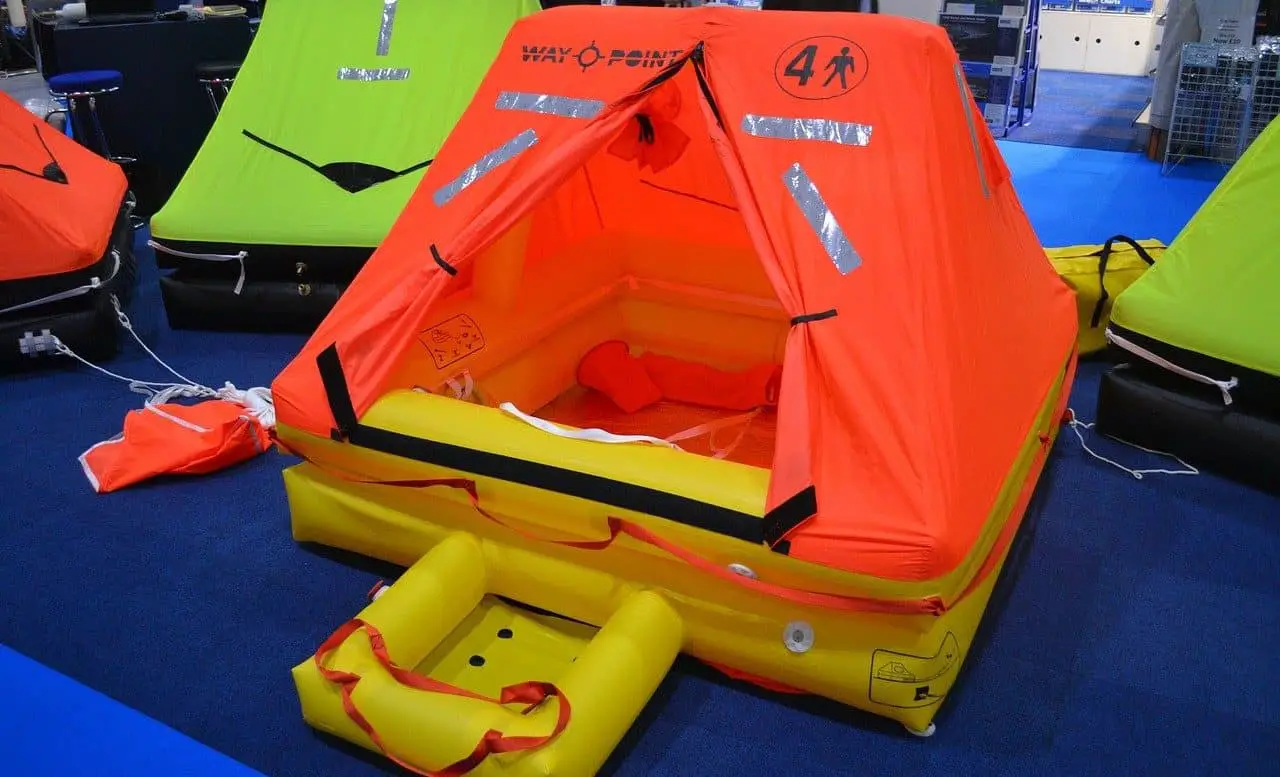
While some people use the terms ‘lifeboat’ and ‘life raft’ interchangeably, they’re actually two completely different vessels. In general, yachts are required to have lifeboats. But since these boats tend to come in pretty large sizes, smaller vessels might not have the space to accommodate them. In that case, they may need to take on a few life rafts.
The main difference between a lifeboat and a life raft is sophistication. Most life boats are designed so that passengers can operate them with a motor, but life rafts are essentially floating rafts that just serve the purpose of keeping passengers afloat while they wait for rescue.
Other than that, the life raft is designed for limited storage. These rafts collapse into compact little packages that fit into a fiberglass tube. They can be stored almost anywhere on board since they’re exceptionally small. On the other hand, lifeboats are full-sized boats that can’t be otherwise folded or collapsed to fit into a smaller space.
In essence, a lifeboat is designed so that it can allow its passengers to escape an otherwise damaged yacht and make their way to safety. The life raft on the other hand has limited features that let passengers steer and move through the water, so they’re really just something to hold on to while you wait.
Finally, there’s the question of deployment. On average, life rafts are easier to deploy because of their simple mechanism and lightweight design. But then again, they may be punctured and torn when improperly handled, leading to a useless raft.
On the other hand, life boats aren’t prone to the same puncture damage that life rafts are, but because they require specific deployment procedures, there’s always the risk of failure especially due to human error.
A Safety Measure Worth Having
No doubt, nobody really wants to be faced with a situation that calls for a lifeboat. But it’s one of those things you’ll be happy to have around especially when the need arises. There are lots of different kinds of lifeboats that provide various benefits and distinct functions, but the end goal is always the same.
So, do yachts have lifeboats? The answer is yes, they all should have. If you’ve got a private yacht and don’t have enough room for a sophisticated lifeboat, make sure you’ve got a bunch of life rafts on board. Affordable, easy to deploy, and compact, life rafts are a simple yet essential for keeping a smaller yacht or vessel safe for the sea.
Related Posts
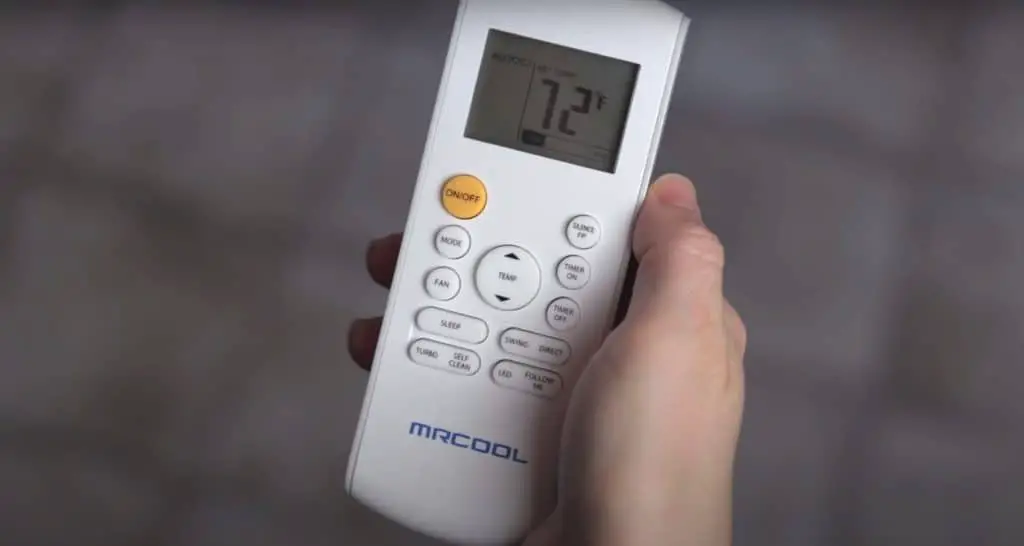
Do Yachts Have Air Conditioning? (Yacht AC Types)
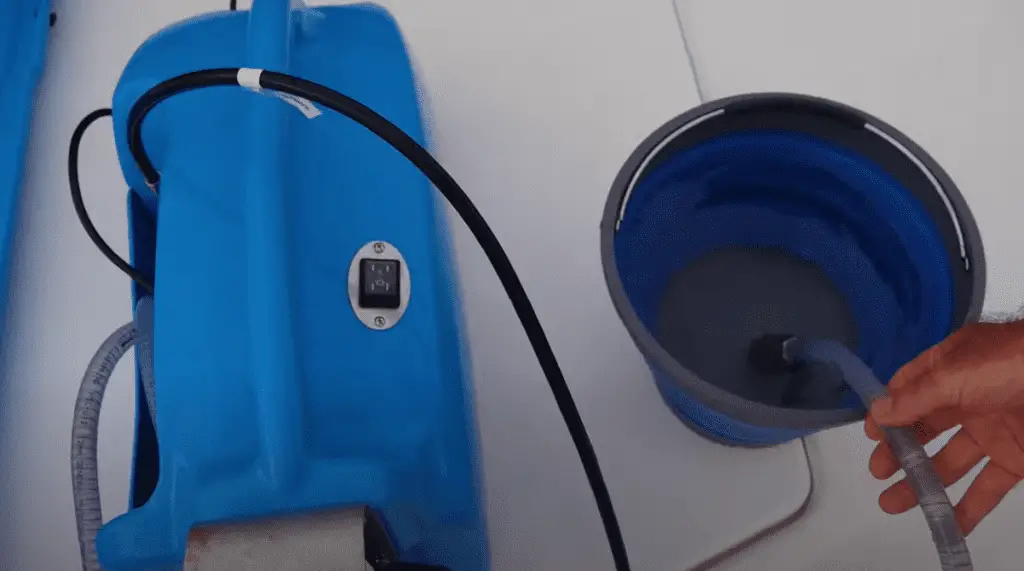
3 Best Watermakers for Sailboats (Reviews & Buying Guide)
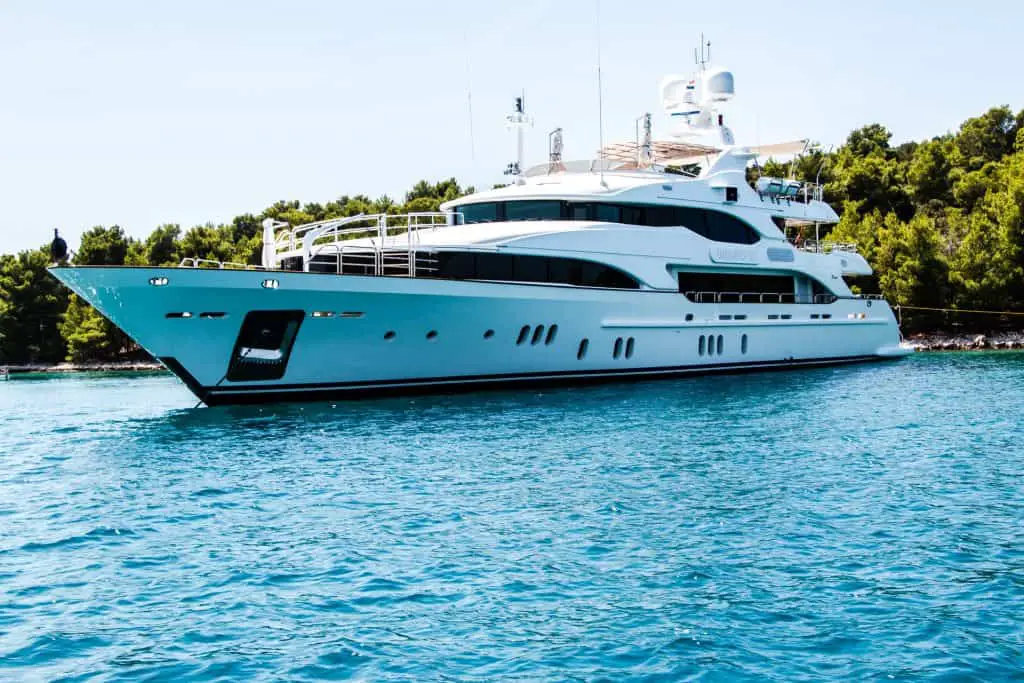
Yacht Broker Salary: How Much Does a Yacht Broker Make?

Captain Sandy Age: How Old is Captain Sandy Yawn?

Do you operate a yacht? Our app is perfect for you
Lifeboat equipment list - a checklist for yachters.
Lifeboats remain an essential piece of safety equipment for yachts, even though most would enjoy them best unused.
In case of unpredicted mid-sea emergencies, lifeboats ensure the safety and survival of everyone on board. Whether it is vessel damage, fire onboard , or any other unfortunate situation, the crew needs to:
- maintain and resupply them regularly
- be properly trained to respond effectively
This is why we wrote this post. In this guide, we go over different types of lifeboats and the basic lifeboat equipment list to keep on hand. We also provide additional resources on maintenance guidelines and lifeboat launching procedures. So bookmark this post for future reference, and let’s get started.
Types of lifeboats
Yacht lifeboat or life raft, the grab bag - important element of life raft equipment list, lifeboat equipment list.
- Lifeboat launching procedure
In 1914, shortly after the sinking of the Titanic, the SOLAS treaty noted that lifeboats should accommodate 100% of the crew and passengers.
Depending on the usage of the main vessel, there are different types of lifeboats that can be encountered. Before we provide our detailed lifeboat equipment list, let’s have a quick overview of the different categories.
Open lifeboats

Open lifeboats have no roof, which allows the crew to actuate them manually by oars in addition to their small ignition engine.
Previously, open lifeboats were found almost on every ship but, today, they are mostly used on smaller vessels. Their usage has been greatly reduced over the years due to their limited protection in harsh weather conditions (storms, high waves, etc).
Closed lifeboat

Closed lifeboats are the most popular type of lifeboat on this list. They possess a roof, which protects the passengers from the elements.
More importantly, closed lifeboats are much more stable and can resist high waves. If toppled, they can stand upright on their own which makes them much safer than open lifeboats.
Finally, closed lifeboats can be further divided into two categories - fully enclosed and partially enclosed lifeboats. Both types are commonly used on industrial boats and larger yachts.
Freefall lifeboat

Freefall lifeboats are similar to closed lifeboats, albeit with an entirely different launching procedure. As their name suggests, these lifeboats are dropped from the aft of the ship, providing the best clearance in case of an emergency.
To compensate for their freefall evacuation method, they are usually heavier and stronger than the common closed lifeboat. The checklist bellow applies for this vessel as well, even though it is not commonly found on yachts. Hence, a free fall lifeboat equipment list is pretty much the same as any other category discussed in the following chapters.
Hyperbaric lifeboat
Hyperbaric lifeboats are lifeboats that are designed to rescue divers from the dive support vessel while they are under a hyperbaric condition (where the atmospheric pressure is at least 10% higher than at sea level).
As such, they consist of a sealable pressure chamber that allows divers to enter and exit the vessel without suffering the effects of sudden decompression .
Fireproof lifeboat
As their name suggests, fireproof lifeboats are designed to resist fires and extreme heat thanks to their remarkable insulation. They are mostly used for rescuing seamen from oil spills and during fire emergencies.
Depending on the size of the vessel, yachts may come equipped with the traditional lifeboats mentioned above. However, smaller yachts will usually be outfitted with more practical life rafts instead.

Life rafts have the same functionality as lifeboats - to provide buoyant shelter and save lives in case the unthinkable happens. However, they take up much less space due to their inflatable nature.
Consequently, the ship’s crew needs to check and maintain their self-inflatable mechanisms regularly. Commonly, life rafts used in tropical conditions should undergo maintenance every year.
The ISO 9650 standard defines life raft standards, and separates them into two categories, depending on their size and geographical usage:
- Type A has better insulation to endure more extreme temperatures (-15C to 65C)
- Type B is better suited for warmer climates (0C and above)
Equipping your vessel with ISO-compliant rafts will ensure the best safety standards available in the industry.
Due to their reduced size, life raft equipment is limited to life-saving essentials. A sensible addition that might help alleviate this limitation is a personal grab-bag.

These waterproof bags will help passengers carry additional items such as:
- Personal medication
- Important documents such as boating licenses, ID, passports, etc.
- Glasses, sunglasses, and sun cream
- Handheld radio or satellite telephone, and a spare set of batteries
- A transmitter for sending an emergency signal
- Additional food items to those already present in the life raft
- Whistle and flares.
As we previously stated, lifeboats are there to provide a safe refuge for its passengers in case of an emergency on the main vessel. With that said, they are also supposed to allow the crew to survive for extended times at sea while awaiting rescue.
For this reason, in addition to the life-safety essentials, our lifeboat equipment list will also itemize some additional inventory needed for communication and survival.
Essential equipment:
Lifeboats should always be equipped with the following essentials:
- Survival at sea manual - every lifeboat equipment list should start with this booklet. This step-by-step guide helps passengers organize and understand the layout of the lifeboat. It also encompasses a lot of knowledge for survival at sea, such as first-aid procedures and navigation tips.
- Buoyant oars - to help the crew propel the lifeboat in case of engine malfunction or fuel shortage.
- Fire extinguishers - suitable to put out oil-based fires.
- Engine tools - for minor adjustments and repairs.
- A buoyant bailer and two buckets - to evacuate excess water from the lifeboat.
- Compass - in addition to the compass embedded on the vessel, each lifeboat is required to carry an additional copass for rescue missions.

- A first aid kit - to be able to treat minor injuries that might have occurred during the evacuation.
- Hatchets and jack-knife - to be used as survival tools for cutting rope, wood, gutting fish, etc.
- A set of fishing tackle - to provide an additional source of food through fishing.
- Sea-anchor - to stabilize the lifeboat and reduce its speed in case of a storm.
- Freshwater - 3 liters of water per person the lifeboat is supposed to fit. Additionally, the lifeboat can contain a desalinator providing fresh water through reverse osmosis .
- A dipper (or ladle) - to avoid spilling drinkable water and maximize its preservation and rationing.
- Food rations - kept in airtight packages and equating to 10.000 kJ per person.
- Thermal protective aids - to keep passengers safe from cold and hot weather.


Communication equipment
Our lifeboat equipment list would be incomplete if we didn’t include the key elements for on-sea communication.
- Whistle - to sound-signal other vessels.
- Portable searchlight - for locating fallen passengers in the sea during nighttime.
- Flares and smoke signals - to draw the attention of upcoming rescue parties and pinpoint the lifeboat’s position for an extended period of time.
- Signaling mirror - used to reflect light and communicate with other vessels at sea during daylight.
- Waterproof torches - for Morse signaling at night. Each one should have at least 6 hours duration and a spare set of batteries available.
- Radar reflector - to reflect radar energy from other vessels' radars so that the lifeboat shows up as a consistent target.

Lifeboat launching procedure
Now that you have everything ready on your lifeboat equipment list, make sure everyone on board knows how to use them. If you are new to the ship, use the manual and learn how to operate one before setting sail.
Additionally, ensure that both crew and passengers know what measures need to be taken in case of an emergency through safety drills. These drills will largely depend on the launching procedure of the lifeboat in question.
After loading the passengers in the lifeboat, these procedures usually fall into the following three categories.
- Off-load mechanism - this mechanism releases the lifeboat from the hooks once it hits the water. Usually, this automatic mechanism functions if there’s no rush to release the lifeboat and the sea, presents favourable conditions.
- On load mechanism - this mechanism can release the lifeboat in the sea while it’s still hanging in the air by the cables. This means that the boat can be lowered and released in the sea while the vessel is still making way through the water or in the rough sea. With that said, it’s not recommended that lifeboats are released from a height over 1m. Otherwise, it could result in severe injuries for the crew or cause structural damage to the lifeboat.
The video below explains both of these release mechanisms in detail.
- Free-fall mechanism - in a free-fall mechanism, the lifeboat can be released from up to 30m in height. This allows for rapid evacuation and helps the lifeboat hit the water well away from the main vessel.
Closing words
The goal of this article was to provide you with a complete lifeboat equipment list. However, we also went over some of the essential characteristics of lifeboats.
To summarize, we:
- Went over the different types of lifeboats and their common functionalities.
- Talked about Inflatable life rafts, emergency grab bags, and what they should contain.
- Provided an illustrated lifeboat equipment list, including lifesaving and communication essentials.
- Explored the different launching procedures for lifeboats.
All in all, this guide should come in handy whenever you are looking to resupply your lifeboats with essential survival equipment. You should follow the guidelines for maintenance and inspection by the letter to optimize your lifeboat’s lifesaving capabilities.

- (207) 742-7614
- [email protected]

You need a dinghy; why not one that can save your life?
You’re free to have fun on the water when you, your family, and your crew are safe. Portland Pudgy, Inc has re-imagined the dinghy in the context of safety at sea, and come up with something really new. A rugged, unsinkable dinghy you can row, motor, sail , and even use as a lifeboat. The Portland Pudgy safety dinghy makes boating even more fun, by making it safer.
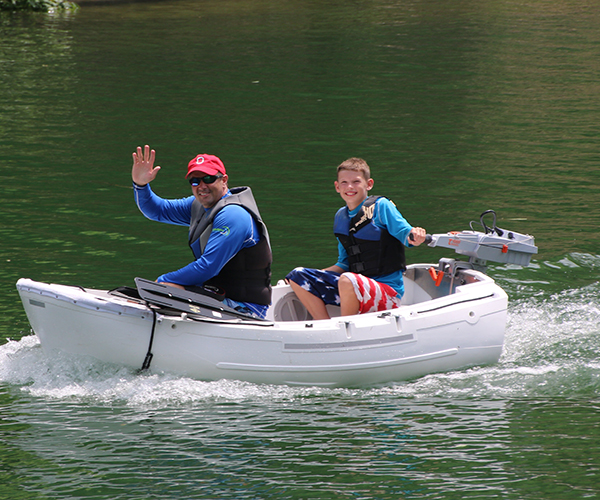
The sail kit makes your Portland Pudgy a fun, safe sailing dinghy. The stability and buoyancy designed into the Portland Pudgy make it safe and sea-friendly as a recreational sailing dinghy for the whole family. The Pudgy takes surprisingly rugged seas and wind for a boat its size…
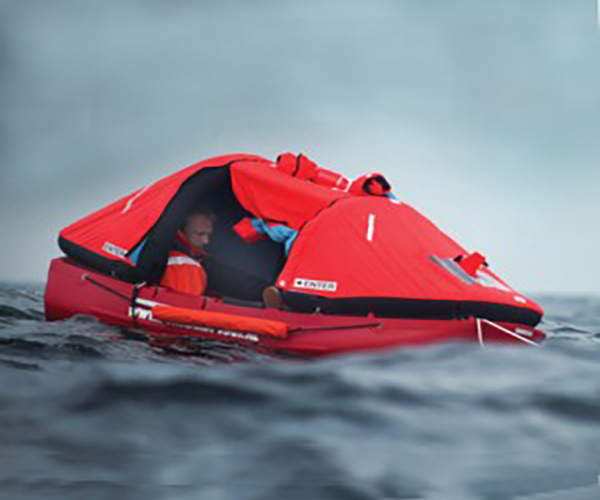
The Portland Pudgy is a rugged, unsinkable self-rescue boat, even without the inflatable exposure canopy and other survival gear. With the canopy and sail, the Portland Pudgy is a dynamic lifeboat. Unlike inflatable life rafts, the Pudgy can’t deflate, and you can sail, row, or motor to safety…
What is the Portland Pudgy safety dinghy?
The Portland Pudgy is a multifunction boat that was designed as a yacht tender and unsinkable, dynamic lifeboat for blue water sailors that can be sailed to safety. The resulting stability, buoyancy, ruggedness, roominess, and “unsinkability” designed into the Portland Pudgy make it unparalleled as an everyday tender, a safe and sea-friendly sailing dinghy, and a great all-around rowboat/motorboat. The Pudgy is a self-contained unit: all accessories, including the oars, sail kit, and exposure canopy, stow within the storage space in double hull of the boat with room to spare.
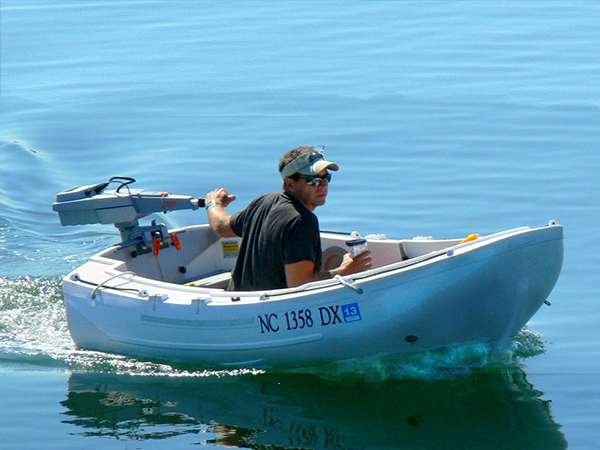
Recreational Small Boat for Sailing, Fishing, Hunting, Diving
Unlike inflatable boats, the Portland Pudgy safety dinghy is a joy to row. It can be rigged out as a fun sailing dinghy. It’s a safe and fun recreational sailing dinghy for the whole family. It’s stable and difficult to capsize, but if you manage to, it’s very easy to right, and comes up dry. No need to wait for rescue (as with some recreational sailing dinghies, like the Opti). The entire sail kit stows neatly out of the way in the interior of the double hull (rudder and leeboards under seats). Because the Portland Pudgy safety dinghy is so stable, rugged, and tracks so well when rowed or motored, it’s also a great fishing boat or duck hunting boat, and a great platform for nature photography and diving. See Sailing Dinghy.
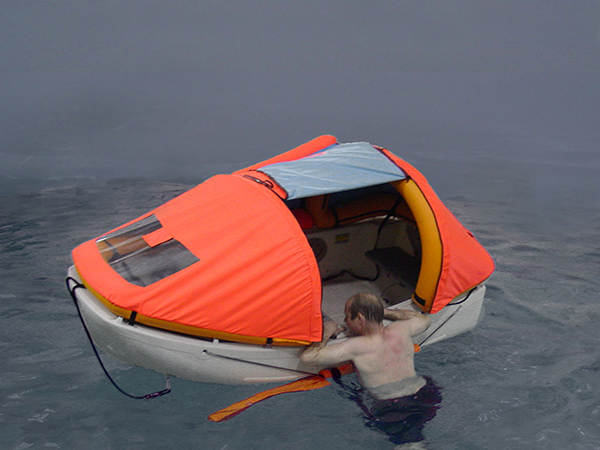
Self-Contained Unit
All of the accessories, oars, sail kit (including telescoping mast and boom), inflatable exposure canopy, sea anchor, ditch bag, provisions, and more, can be stowed within the boat via the five watertight hatches. This is very convenient in your everyday dinghy or sailing dink. It’s an extremely important safety feature of the Portland Pudgy lifeboat. All of your equipment is there in an emergency.
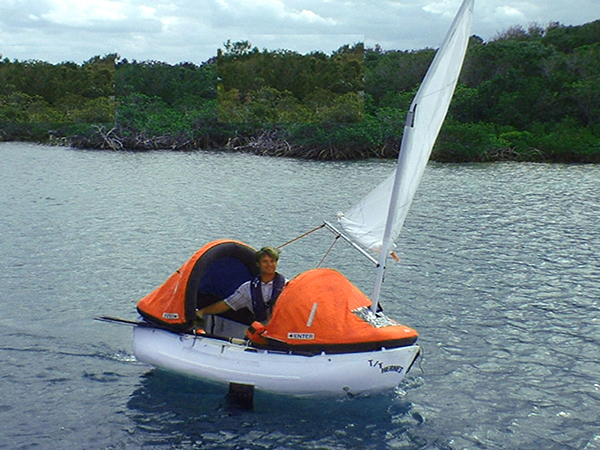
Dynamic Lifeboat
The Portland Pudgy safety dinghy is a self-rescue boat, even without the optional inflatable exposure canopy and other survival gear. With the exposure canopy, sea anchor, and sail kit, the Portland Pudgy is an unsinkable, dynamic lifeboat. Unlike inflatable life rafts, the Pudgy cannot deflate, and you can sail, row, or motor this rugged self-rescue boat to shipping lanes or land.
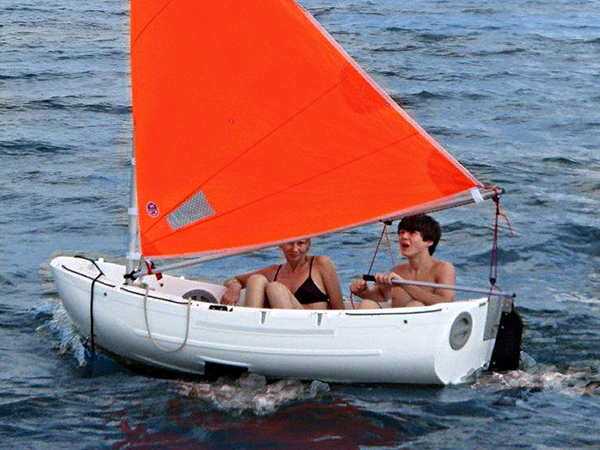
Everyday Yacht Tender, Rowboat, Motorboat, Rugged Workboat
The Portland Pudgy safety dinghy is the safest, most rugged yacht tender on the market to row, motor, tow and carry. It tracks perfectly and moves along nicely with a small motor. The Pudgy is extremely buoyant and has huge carrying capacity, both in the roomy cockpit and inside the storage compartments in the double hull. The Portland Pudgy (7′ 8″, 128 lb., USCG-approved as a rowboat and motorboat for 4 people) is designed and manufactured (in the USA) to be an exceptionally rugged, stable, unsinkable boat. Its pram shape allows it to fit on the deck of many cruising sailboats. This small boat is so stable you can stand up and walk around in it. The Portland Pudgy safety dinghy has all the benefits of inflatable boats and RIBs (rigid inflatable boats), without the risk of deflation. There is no need for an unsightly, expensive, and deflation-prone RID kit (“dinghy dogs”) with the Pudgy: it’s an unsinkable boat, with built-in buoyancy. See Yacht Tender/Dinghy.
Live-aboards Teresa Carey and Ben Erickson Carey sent us this wonderful video about their Portland Pudgy. Lots of great sailing shots. Deliberately flipping the Pudgy (:33) and then easily righting it (2:00). Inflating the exposure canopy using the alternative method (hand pump) and using it as a dodger (1:15). Sleeping in the Pudgy. Lots of shots that show how stable and roomy it is. And lots just showing what a fun little boat it is.
Testimonials
There was a problem reporting this post.
Block Member?
Please confirm you want to block this member.
You will no longer be able to:
- See blocked member's posts
- Mention this member in posts
Please allow a few minutes for this process to complete.

Please verify you are a human
Access to this page has been denied because we believe you are using automation tools to browse the website.
This may happen as a result of the following:
- Javascript is disabled or blocked by an extension (ad blockers for example)
- Your browser does not support cookies
Please make sure that Javascript and cookies are enabled on your browser and that you are not blocking them from loading.
Reference ID: 2c0d84bd-8c31-11ef-8fc9-e2fc5de44ea9
Powered by PerimeterX , Inc.
Yachting Monthly
- Digital edition

Best Liferaft for sailboats – offshore ISO9650-1 models
- July 31, 2023
Tech Editor and safety gear specialist Fox Morgan picks out some of the best liferafts for sailboats in the offshore ISO9650-1 category

We hope to never use some of the safety gear we have onboard, but that doesn’t mean we shouldn’t make some informed choices. I’ve picked out some of the best ISO9650-1 liferafts for sailboats and especially those who go further offshore or crossing oceans, racing or rallying long distances.

All of the rafts in my guide have options for canister or valise and come in sizes from 4 person to 12 person capacity. Given the size and weight of 12 man rafts, boats with full crews onboard often opt for two smaller rafts, such as 2 x 6 man to make them easier to handle and easier to stow. You can buy one and rent one too, so if most of the time there’s no more than six of you onboard but sometimes you go fully crewed, then supplementing with an additional rental raft can be a good solution. I’ve clambered aboard many liferafts in my time as a professional and corinthian sailor, getting in up that ladder has never got easier no matter how many times I practice. If you have the choice I highly recommend a raft with either a semi rigid or inflatable entrance ramp.
Ocean Safety Ocean ISO9650-1 Liferaft
Reason to buy
trusted name in the industry, variety of packs to meet all current sailing event requirements, 20 year warranty
Reasons to avoid
a premium liferaft with a premium price tag.
Specifications:
4 man liferaft
Container Dimensions (cm) 71 x 49 x 28
Container Weight (kg) 30
Valise Dimensions (cm) 67 x 42 x 24
Valise Weight (kg) 28
6 Man liferaft
Container Weight (kg) 37
Valise Dimensions (cm) 74 x 43 x 24
Valise Weight (kg) 36
4 Person Ocean Safety Ocean ISO9650-1 Liferaft <24
The Ocean Safety Ocean liferaft is made with PU Nylon Laminate. It has an insulated floor and is suitable for use in temperatures down to minus 15 degrees C. It has a less than 24 hour equipment pack as standard, but it can be upgraded to either a greater than 24 hour pack or SOLAS B.
We’ll be testing this liferaft along with others in the buyers guide in a hands on real world test this summer.
Key Features of the Ocean Safety Ocean ISO Liferaft
The less than 24 hSOLAS approved internal and external lighting system
Strong boarding ladder with knee scoop & grab handles for quick boarding Highly visible in yellow and orange Rain water collection 4/5 x 75ltr ballast pockets for increased stability (300 litres ballast for the 4 man) 3 year service interval, 20 year warranty
equipment pack contains: 1 x Buoyant Knife, 1 x Bailer, 2 x Sponge, 1 x Paddle (pair) 1 x Whistle, 1 x Torch & Spares, 1 x Heliograph, Anti Seasickness Tablets (6pp), Seasickness bag (1pp), 3 x Red Handheld Flare, 2 x Parachute Rocket Flare, 2 x Repair Kit (Clam Seal), 1 x Bellows, 1 x Throwing Line (30m), 1 x Signal Card, 1 x Sea Survival Instructions, 1 x Repair Plugs (set), 1 x Immediate Action Cards.

Waypoint ISO 9650-1 Ocean Elite Liferaft
SOLAS approved external and internal LED lights with lithium battery and manual control, Pictograms are used for instructions,
at the top end of the price scale
Cannister 4, 6 or 8 man
Weighs 28kg
Fully tested to the ISO 9650-1 Group A specs, the Waypoint ISO 9650-1 Ocean Elite liferaft is extremely well built and designed for the toughest sea conditions. This is one of the best liferafts in the market today for the ocean sailor. It complies and exceeds the ISO 9650-1 Group A regulations for < 24 hrs and also > 24 hrs (with additional extra equipment).
It meets the MCA code of practice and complies with the ISAF regulations for Ocean Racing worldwide.
Made with PU laminate. Constructed with 4 independent chambers. Two tubes, an inflatable boarding ramp and an arch that deploy automatically. The waypoint has a large inflatable boarding ramp which makes boarding easier than the more simplistic models with a ladder only. If you’ve tried climbing into a liferaft during a sea survival pool drill, you’ll know how hard gettinginto a liferaft can be so the inflatable ramp is worth the extra you’ll pay for this higher specified model of raft.
It has a double floor with triple thermal insulatation. 4 large, (75 litres each) water ballast pockets underneath. Bright nylon Flo orange self erecting canopy, with a large zip operated entrance, which also has a large overlapping flap to stop water entering in extreme weather conditions.
Strips of Solas reflective tape on all the sides of the canopy and on the floor make the liferaft visible in the dark from any angle, including if capsized.
Safety Contents: 1 x Rescue Quoit & 30 m. Line, 1 x Sea Anchor & 30 m. Line, 1 x Flo Orange Floating Safety Knife, 2 x Paddles, 1 x Bailer, 2 x Sponges, 1 x Pump (bellows), 1 x Repair Kit, 1 x Whistle, 1 x Table of rescue signals, 1 x Heliograph (Signalling mirror), 1 x Fishing Kit, 2 x Waterproof Solas Floating LED Torch, spare battery and bulb., 3 x Red Hand Flares, 2 x Parachute Flares, 1 x Liferaft Manual with survival instructions, 6 x Anti Sea Sickness Tablets per Person, 2 litre water collection graduated bag with tap, Graduated cup, 1 x Sea sickness bag per person

Seago Sea Master ISO 9650-1 Liferaft
more affordable than some other iso 9560-1 liferafts, inflatable door ramp
black tubes may be less visible than others with brighter tubes.
Specifications: Valise Container
Sizes – 4, 6, 8, 10 and 12 person
Valise | Container 4 man : L650 x W300 x H420 | L730 x W490 x H310 6 man : L720 x W340 x H460 | L730 x W490 x H310 8 man : L720 x W340 x H460 | L780 x W530 x H365
Colour – High viz orange canopy & ballast pockets. Black lower tubes
The SeaMaster ISO 9650-1 life raft is a great option from this well known brand in the marine leisure world. It’s one of the few liferafts on the market in this category that still have the black tubes/inflatable sections. This part is made from butyl rubber which is well known, tried and tested for many years.
Fitted with high visibility SOLAS approved retro reflective tape on canopy and underside of raft floor.
Ballast Pockets – 4 x 55 Litre lead weighted, (total 220 litres ballast)
SOLAS Approved automatic high visibility flashing external light to enable quick recovery. Also has an Internal light.
This liferaft is intended for use in extended offshore, racing yachts and coded boats.
Service & Warranty – 3 Year service interval, 12 year warranty
Emergency Pack – 1 x Bailer, 1 x Drogue (sea anchor), 1 x Floating knife, 1 x Hand pump, 1 x Life saving signal card, 1 x Pair of oars, 1 x Repair kit, 1 x Rescue quoit with 30m of line, 1 x Signal mirror, 1 x Waterproof torch & batteries, 1 x Wet notes, 1 x Whistle, 2 x Parachute rockets, 2 x Sponges, 3 x Red hand flares, 6 x Anti sea sickness tablets

Lalizas ISO Racing Liferaft
lightweight, brightly coloured, reasonably priced
might be a little too lightweight for some
Lalizas 6 Person Racing Liferaft ISO 9650 Type-1 Group A < 24HR
Weight 29kg : dimensions L680mm W480mm D240mm
The Lalizas ISO Racing Liferaft is an ultra-light and compact liferaft. The modest size provides easy storage, making this liferaft a good choice for boats tight on space.
Available in sizes for 4 – 12 people, packed either in a canister or in a waterproof valise.
This liferaft, despite its compact and lightweight design has a thermally insulated floor and twin buoyancy tubes with safety valves. There’s a rainwater collection gutter built into the canopy.
The self erecting canopy is International orange with retro-reflective tapes.
External and internal lifelines and righting device suitable for handling by one person Operating temperature -15° C to + 65° C
Equipment pack includes, 1 x Portable Buoyant Bailer, 2 x Sponge, 1 x Pair of Paddles, 1 x Whistle, 2 x Water Proof Torch and Spare Bulb, 1 x Signalling Mirror, 1 x Sea Sick Bags (1 per person), 1 x Repair Kit, 1 x Bellow (pump), 1 x Operating Manual, 1 x Table of Lifesaving signals, 1 x Logbook, 1 x Immediate Actions Card, 1 x Throwline with Quoit, 1 x Knife, 1 x Drogue with 30m of line, Distress Flares, 3 x Red Hand Flares, 2 x Red Parachute Flares

VIKING RescYou Pro liferaft
semi rigid ramp, self righting,
black tubes might be less visible than brighter coloured options, the most expensive raft in our guide
Sizes: 4-8 persons, available in a container or valise. 4 person, container dimensions 80 x 57 x 32 cm | weight 40 kg 4 person, valise dimensions 84 x 43 x 34 cm | weight 38 kg
The Viking RescYou Pro is their top of the range leisure liferaft. Apparently this raft is self righting. I’ve heard that before and yes, in flat calm conditions they do, but I’d like to see it perform in some real world conditions… (we’re planning to do just that very soon)
The inflatable double floor gives thermal insulation from cold water. Four x 55L ballast bags for stability. Bright yellow canopy is the brightest of the bunch but the black rubber tubes might be a bit of a throw back to the rafts of 10 years ago. A lot of the manufacturers are moving away from black rubber tubes in their top of the range models. There’s nothing wrong with rubber tubes structurally, but they do lack visibility at sea.
This raft has a blue liner, which is supposed to be calming. I’m not sure how much you’d be taking in of your raft details and colours if you were using it for real, those boffins must know what they’re doing to insist on that level of detail. There’s an external strobe light and an internal light. Internal and external lifelines and a rain water collector.
Curtained windows and openings give a 360 degree view of the horizon. Externally the canopy and raft chambers have SOLAS reflective tape for maximum visibility under flashlight.

Plastimo Transocean+ Liferaft
The Golden Globe round world yachts were all equipped with these, brightly coloured,
inflation canister positioned right by the entrance/boarding ramp
4 Person Plastimo Transocean ISO/ ISAF <24h Liferaft
The Plastimo brand from France is well known for a wide range of leisure marine equipment. Wander around any chandlery and you’ll see something made by plastimo. My handbearing compass for example is a plastimo.
Double insulated floor with fluorescent orange canopy with automatically erecting arch tube. 4.3 candela outside light, with radar and retro reflecting stripes.
The Transocean ISAF also has a boarding ramp with an inside grab handle to help haul yourself in and roll over the top tube.
The Golden Globe boats were all equipped with top spec plastimo liferafts, so that’s a fairly good endorsement. Tapio, the competitor whos boat sank suddenly spent a day and a night in his and commented on how comfortable he was while he awaited rescue. I’m not sure they were built for comfort, but more for survival. Anyway, there’s some great pics of this liferaft in his rescue story.
I’ll let the pictures do the talking.
<24h Equipment Pack (sold as standard) , 1 x floating anchor with 30m line, 1 x Pump, 2 x Thermal Protective Overalls SOLAS, 2 x Paddles, 1 x Floating Knife, 1 x Rescue Quoit with 30m Line, 1 x Bailer, 2 x Sponge, 1 x Repair Kit, 1 x Check book and Liferaft Instructions Manual, 1 x Survival Instructions and Signal Card, Personal Survival, Rain catching gutter on canopy, Rainwater collecting pouch, Water 1.5L (Qty per person), 500g Food Rations (Qty per person), 1 x First Aid Kit, Seasickness Pills (6/person), Seasickness Pouch (1/person), Signalling Equipment, 3 x Handflares SOLAS, 2 x Parachute Rockets SOLAS, 1 x Signalling Mirror, 1 x Outside Light on Canopy, 1 x Inside Light on arch tube, 2 x Waterproof Torch with spare batteries and Torch, 1 x Whistle

Crewsaver ISO Ocean Liferaft ISO 9650-1
trusted brand with good reputation for safety gear,
lower freeboard than others in this category
4 man canister <24hISO OCEAN LIFERAFT 4 MAN | dimensions L800mm W570mm D220mm | weight 36.1 kg
The Crewsaver ISO Ocean life raft has a semi-rigid boarding ramp which is easier than a basic ladder but not quite a luxurious as the floating ramp seen on other models in this guide. This raft is make with polyurethane as per others with brightly coloured tubes.
The water ballast pockets on the 4 man liferaft give 150l litres of ballast. Crew saver have just large capacity pockets on this 4 man raft. (4 Man – 2 x 84 litre water pockets. 6, 8 and 10 Man – 3 x 84 litre water pockets. 12 Man – 5 x 60 litre water pockets) How this makes the raft handle in tough conditions will be interesting to find out in our hands on test coming soon. Tough polyurethane coated nylon canopy with a simple zip closed canopy door. Thie raft has Interior and exterior lifelines, an external strobe light to aid night location by search and rescue teams and an internal LED light.
At the rear of the canopy is a rainwater collection scoop.
- Send Request

- Boats & Davits
- Lifeboats, Rescue- and Tender Boats
- Totally Enclosed Lifeboats
Totally enclosed lifeboats
PALFINGER MARINE’s totally enclosed lifeboats are designed and tested in accordance with the latest IMO/SOLAS regulations. They are available as tanker as well as dry cargo versions and are suitable for various marine and offshore purposes. Typically used for oil platforms, merchant vessels, research vessels and more, PALFINGER’s totally enclosed lifeboats offer not only impressive quality standards, but are also designed for numerous possible areas of application.
Go directly to the technical data:
- Product Range
KISS lifeboat series
- Capacity for 50-90 people
- Big size seats available
- Side hatch available
- Certification authority (MED/USCG)
- Complies with latest SOLAS/LSA regulations
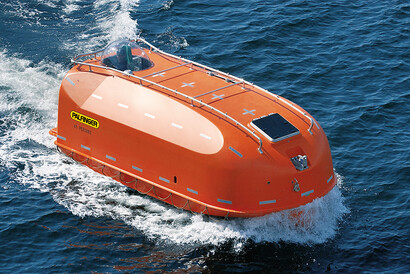
NPT lifeboat series
- Capacity for 21-150 people
- Compliance with IMO MODU Code
- External steel parts of 316 L quality
- Available with side hatch

- SART (Search and Rescue Transponder)
- EPIRB (Emergency Position Indicating Radio Beacon)
- Engine heater
- Winterization package
- Spring starter/hydraulic starter
| P-TELB 1350C / P-TELB 1350T | 150 | |||
| * Tanker version, dry cargo version: same weight WHOM TO CONTACT?If you want to contact us, please use the contact form on this page or choose your respective point of contact here: Find your respective point of contact Photo Gallery  |
IMAGES
VIDEO
COMMENTS
Each type of lifeboat serves a specific purpose, such as quick evacuation, sheltering occupants from the elements, or allowing for rapid rescue operations. Choosing the right type of lifeboat requires a thorough examination of the vessel’s characteristics, operational environment, and safety requirements.
A lifeboat, or life raft, is a small but durable, life-saving vessel carried aboard a larger ship designed to be used for emergency evacuations during a disaster. Lifeboats are built to be tough and can be rigid hulls or inflatable hulls.
To answer the main question, yes, yachts have lifeboats. But smaller vessels that can’t accommodate lifeboats for storage capacity limitations must have at least enough life rafts on board.
Provided an illustrated lifeboat equipment list, including lifesaving and communication essentials. Explored the different launching procedures for lifeboats. All in all, this guide should come in handy whenever you are looking to resupply your lifeboats with essential survival equipment.
A lifeboat or liferaft is a small, rigid or inflatable boat carried for emergency evacuation in the event of a disaster aboard a ship. Lifeboat drills are required by law on larger commercial ships. Rafts are also used. In the military, a lifeboat may double as a whaleboat, dinghy, or gig.
With the exposure canopy, sea anchor, and sail kit, the Portland Pudgy is an unsinkable, dynamic lifeboat. Unlike inflatable life rafts, the Pudgy cannot deflate, and you can sail, row, or motor this rugged self-rescue boat to shipping lanes or land.
A life raft is designed to keep the crew of a sunk, capsized, burned or otherwise uninhabitable boat alive until they can be rescued. It’s the most important piece of equipment on your boat that you hope you’ll never use.
Dreaming of a liveaboard boat life on the water? Living aboard a boat offers a unique lifestyle filled with adventure, freedom, and the serenity of the open seas.
Fully tested to the ISO 9650-1 Group A specs, the Waypoint ISO 9650-1 Ocean Elite liferaft is extremely well built and designed for the toughest sea conditions. This is one of the best liferafts in the market today for the ocean sailor.
PALFINGER MARINE’s totally enclosed lifeboats are designed and tested in accordance with the latest IMO/SOLAS regulations. They are available as tanker as well as dry cargo versions and are suitable for various marine and offshore purposes.